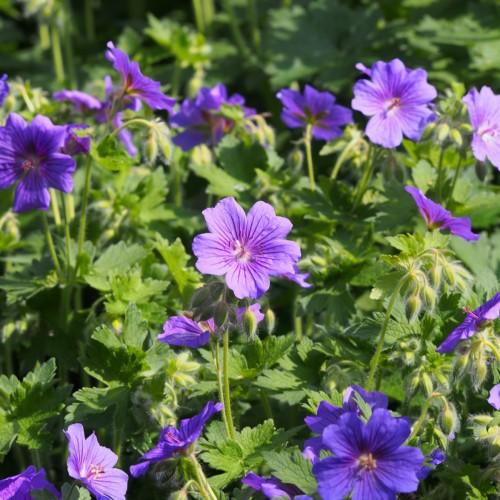
cranesbill
Geranium magnificum 'Rosemoor'
Cycle:
Herbaceous Perennial
Watering:
Minimum
Hardiness Zone:
5 - 8
Flowers:
Flowers
Sun:
Full sun,part shade
Leaf:
Yes
Growth Rate:
Low
Maintenance:
Low
Drought Tolerant:
Yes
Care Level:
Medium
watering
Water your cranesbill when the top 1-3 inches of soil is dry. Depending on the humidity and temperature levels, this may happen every few days or up to every week. As a general rule, water deeply – about an inch each time. Avoid wetting the plant foliage as that can cause fungal and pest problems.
sunlight
Cranesbill (Geranium magnificum 'Rosemoor') plants prefer full sun for most of the day in order to grow their best, but some shade in the heat of the day is beneficial. The plant prefers at least 6 hours of direct sunlight each day. Cranesbill is hardy and can thrive in most parts of the country with the right amount of sunshine. If planted in areas with less sunlight, the plant may start to stretch and not bloom as well. This species is best grown in a sunny location for best flowering.
pruning
Cranesbill (Geranium magnificum 'Rosemoor') should be pruned in late winter or early spring. Pruning should involve removing any weak or spindly stems, as well as deadheading faded blooms or seed heads. In the case of this particular species, pruning should be light and selective, and leaves should be left attached. Heavy pruning may reduce blooming, so it should be avoided. During periods of active growth, pinching back the tips of new growth can be used to encourage bushier growth and more flowers.
